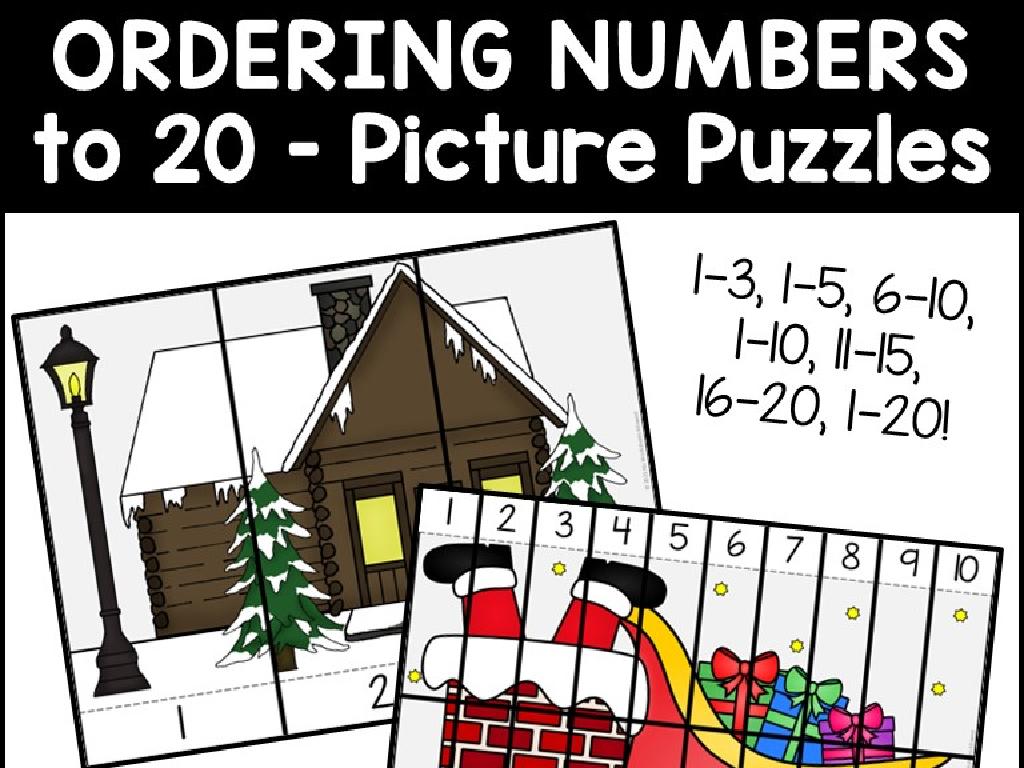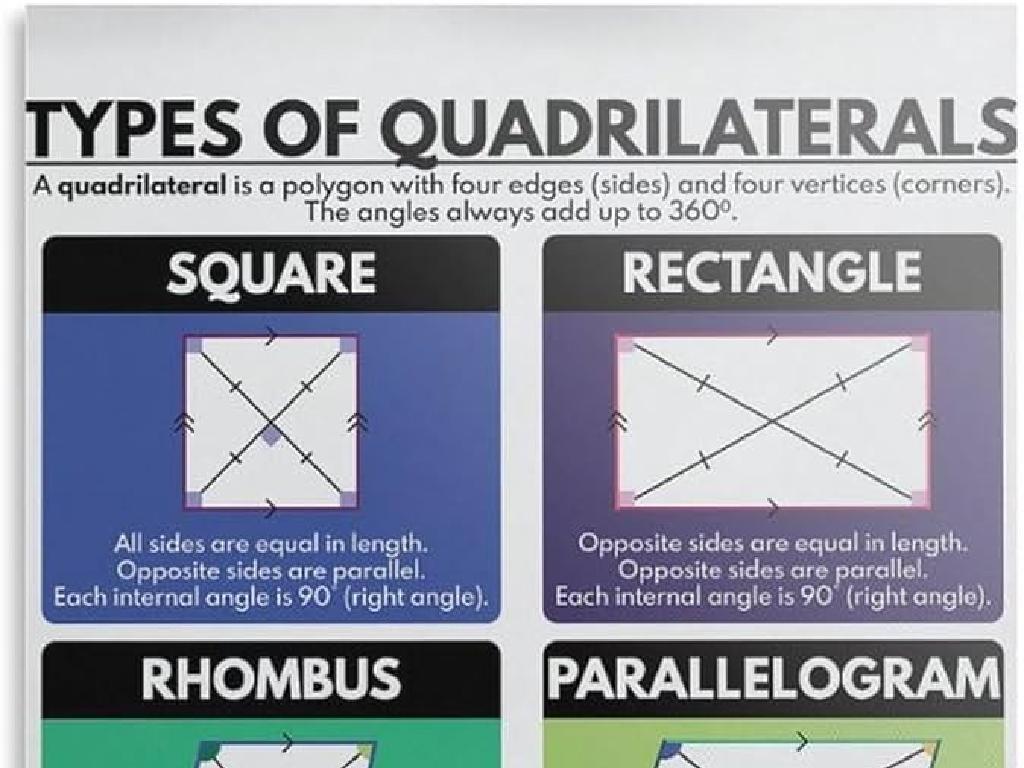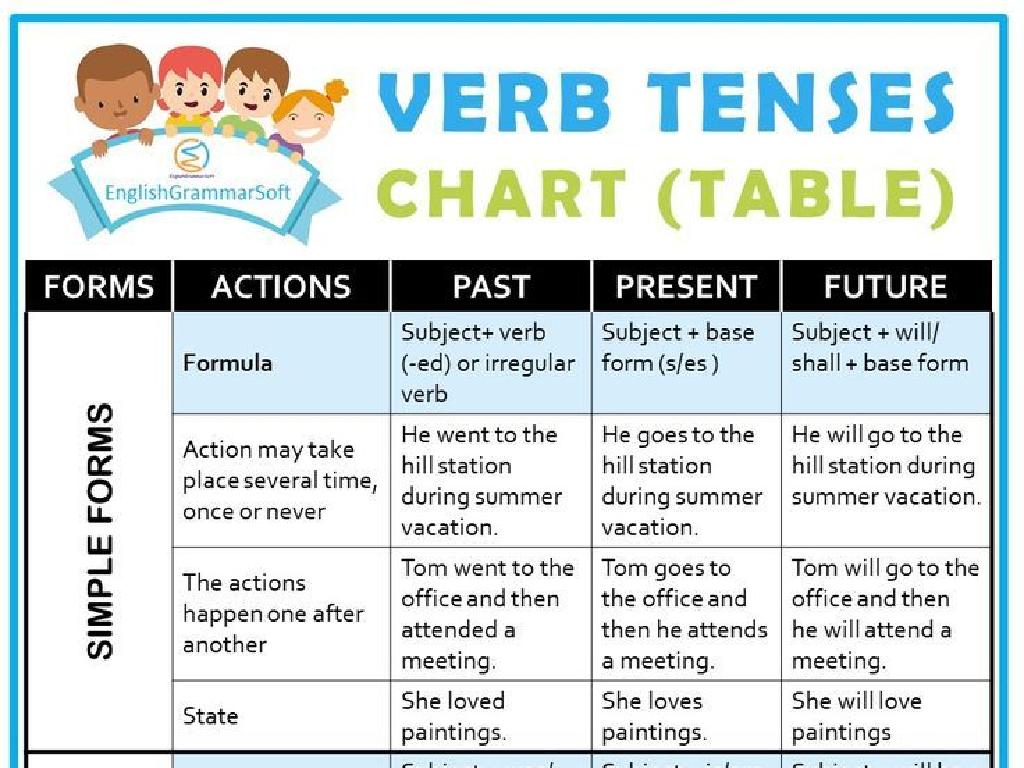Estimate Sums And Differences: Word Problems
Subject: Math
Grade: Third grade
Topic: Estimate Sums And Differences
Please LOG IN to download the presentation. Access is available to registered users only.
View More Content
Welcome to Estimation!
– Becoming estimation experts
– Learn to estimate sums & differences
– Rounding numbers to add or subtract quickly
– Why estimation is useful
– Helps in making quick decisions, like during shopping
– Practice with real-life examples
– Use examples like estimating total cost of toys or time needed for chores
|
This slide introduces the concept of estimation, a fundamental skill in mathematics and daily life. Start by engaging the students with the idea of becoming ‘estimation experts’ and explain that estimation involves rounding numbers to make adding and subtracting easier and faster. Emphasize the practicality of estimation by discussing how it helps in making quick decisions, such as estimating the total cost while shopping or the time needed to complete tasks. To reinforce the concept, provide relatable examples that they can connect with, such as estimating the total cost of a few toys they want to buy or how long it might take to do their chores. Encourage the students to think of other situations where they could use estimation. The goal is to show that estimation is not just a math skill but a useful tool in everyday life.
Understanding Estimation
– Estimation is educated guessing
– Like guessing the number of candies in a jar
– It gives quick, close answers
– Useful for checking math work
– Rounding helps in estimation
– If you have 253 + 347, round to 250 + 350
– Practice with word problems
– Solve problems using estimation skills
|
Estimation is a fundamental math skill that allows students to make reasonable guesses about a quantity or a result. It’s particularly useful when exact numbers are not required, or when quick calculations are needed. Teach students that estimation is not just a random guess; it’s based on information and logic. Rounding numbers is a key strategy in estimation, simplifying numbers to make mental calculations easier. For example, rounding to the nearest ten or hundred can quickly help determine the approximate sum or difference in a problem. Encourage students to practice with word problems that require estimation to find solutions, reinforcing the concept that estimation is a practical tool in everyday math.
Rounding Numbers for Estimation
– Review rounding to nearest ten, hundred
– Rounding makes numbers simpler to work with
– Let’s practice rounding together
– We’ll round numbers as a class activity
– Understand rounding’s role in estimation
– Rounding gives us a close number, easier for quick math
– Apply rounding to estimate sums, differences
– Use rounded numbers to solve word problems
|
This slide is aimed at reinforcing the concept of rounding numbers to the nearest ten and hundred, which is a foundational skill for estimating sums and differences in word problems. Begin with a brief review of how to round numbers, ensuring that students recall the rules (e.g., if the digit is 5 or more, round up). Engage the class with interactive rounding exercises, possibly using number lines for visual aid. Explain how rounding simplifies complex numbers, making mental math quicker and estimates more manageable. Finally, demonstrate how these rounded numbers can be applied to estimate the results of addition and subtraction in word problems, preparing students for real-world applications where precise calculations are not necessary. The teacher’s notes should include several examples of rounding and estimation, as well as tips for helping students who may struggle with the concept.
Estimating Sums with Rounding
– Learn to round numbers to estimate sums
– Example: 243 + 567 rounds to 240 + 570
– We round 243 down to 240 and 567 up to 570 to make adding easier.
– Practice with interactive examples
– We’ll work through problems as a class to learn this skill.
– Understand how estimation helps in math
|
This slide introduces the concept of using rounding to estimate the sum of two numbers, which simplifies addition. Start by explaining the rules of rounding numbers to the nearest ten. Show the example provided, demonstrating how 243 is rounded down because the last digit (3) is less than 5, and 567 is rounded up because the last digit (7) is 5 or more. Engage the class with interactive examples, asking them to round numbers and estimate sums on their own or in small groups. Emphasize that estimation is a useful skill for quickly solving math problems in everyday situations, such as shopping or budgeting. Provide additional examples for students to practice and ensure they understand the concept before moving on.
Estimating Differences with Rounding
– Learn to estimate by rounding
– Example: 789 – 436 rounds to
790 – 440 = 350 (round to nearest ten)
– Practice with fun problems
– Try rounding numbers to the nearest ten before subtracting
– Share your estimates in class
|
This slide introduces students to the concept of estimating differences by rounding numbers to the nearest ten before subtracting. Start by explaining why estimation is useful, for example, to quickly check the results of subtraction or to make calculations easier when exact numbers aren’t necessary. Show the example on the slide, rounding 789 to 790 and 436 to 440, then subtracting to estimate the difference. Provide several practice problems for students to work on, either individually or in small groups, and encourage them to share their estimates and how they arrived at them. This will help reinforce their understanding of rounding and estimating differences.
Estimation in Everyday Math
– Estimation in daily life
– Estimation helps in quick calculations, like guessing the total cost while shopping.
– Solve estimation problems
– We’ll read problems together and estimate the answers.
– Discuss reasonableness
– Let’s talk about why our estimates make sense.
– Practice with examples
– Try estimating the number of apples in a bag or pencils in a box.
|
This slide aims to show students how estimation is a useful skill in everyday life, such as making quick calculations when shopping or planning events. Start by explaining the concept of estimation and its practical applications. Then, read through word problems as a class and work on estimating the sums and differences together. Encourage students to explain their thought process and discuss the reasonableness of their estimates to ensure they’re not just guessing but using logical strategies. Provide real-life examples for practice, such as estimating the number of items or the total cost of goods, to reinforce the concept.
Class Activity: Estimation Station
– Break into groups for word problems
– Solve and present your estimates
– Explain how you estimated
– Did you round up or down? Why?
– Class votes on best estimates
– Think about which makes sense and why
|
This activity is designed to encourage collaborative problem-solving and critical thinking as students work in small groups to tackle estimation word problems. Each group will use rounding and other estimation strategies to find approximate solutions to the problems. After solving, they will present their methods and reasoning to the class. Encourage students to explain their thought process clearly, discussing whether they rounded numbers up or down and why. Following the presentations, the class will engage in a discussion and vote on which group’s estimate seems the most reasonable, fostering a deeper understanding of estimation in practical scenarios. Provide guidance on how to respect each other’s ideas during the voting process. Possible activities include estimating the total number of items in a jar, the total cost of items in a shopping list, or the time needed for various activities.
Wrapping Up: Estimation Essentials
– Why estimation is useful
– Estimation helps us quickly find approximate answers.
– Key takeaways from our lesson
– Remember how to round numbers and use them to estimate sums and differences.
– Time for your questions
– Let’s clear up any confusion before we finish.
– Practice makes perfect
– Keep practicing with more word problems at home!
|
As we conclude today’s lesson on estimation, it’s crucial to emphasize the practicality of estimation in everyday life, such as in shopping or planning events. Review the steps of rounding numbers to the nearest ten or hundred to estimate sums and differences. Address any questions students may have to ensure they are confident in applying these concepts. Encourage them to continue practicing with additional word problems provided as homework to reinforce their skills. The goal is for students to become comfortable with estimation and recognize its value as a mathematical tool.
Homework Challenge: Estimation Adventures
– Take home estimation problems
– Solve word problems using estimation skills
– Practice estimation daily
– Try estimating in real-life situations, like at the grocery store
– Share your answers in class
– Be prepared to discuss how you estimated
– Remember, practice makes perfect!
|
This homework challenge is designed to reinforce the concept of estimation in everyday contexts. Students are encouraged to apply estimation techniques to solve word problems provided as homework. Additionally, they should practice these skills in real-life scenarios, such as estimating the total cost of items while shopping or the time needed to complete a task. This practical application helps solidify their understanding of estimation. In the next class, students will have the opportunity to share their experiences and solutions, fostering a collaborative learning environment. The teacher should provide a variety of word problems with different levels of complexity to cater to all students and suggest real-life situations where estimation could be useful.






